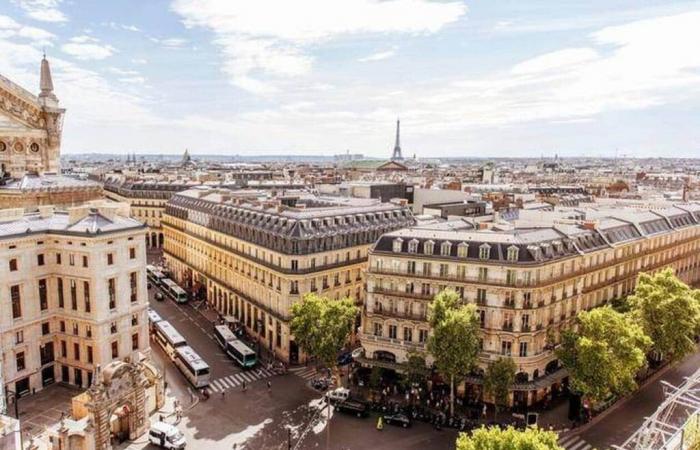
Wednesday, September 18, 2024
Urban planning
By the evening edition, with Agence France-Presse.
The concept of the “15-minute city” took off during the Covid-19 crisis, when lockdowns led to a focus on local services. It has since been adopted by dozens of mayors around the world, while also becoming the subject of numerous conspiracy theories on the internet.
Paris and Milan are among the cities closest to the “15-minute city” model, an urban planning concept in which every resident lives within a 15-minute walk or bike ride of everything they need for their daily lives, according to a global analysis published Monday.
The concept of the “15-minute city” took off during the Covid-19 crisis, when lockdowns led to a focus on local services. It has since been adopted by dozens of mayors around the world, while also becoming the subject of numerous conspiracy theories on the internet.
Read also: Don’t like walking too much? Here are five French cities where you won’t have to trek too far
To find out which cities were closest to achieving this model, a team of Italian researchers started with a database of about 10,000 cities around the world. They then used open-access maps to calculate the distance their residents would have to travel to access shops, restaurants, schools and health centres, among others.
Actually, “Many people already live in a ’15-minute city'”, explains to Agence France-Presse Hygor Piaget Monteiro Melo, co-author of the study published in Nature Cities. But in many cases there are often huge differences between the affluent city centre and the outskirts, he added.
Milan, Barcelona…
As in the immense New York megacity where “Manhattan is probably one of the closest places in the world to a 15-minute city,” without this necessarily being the case in more remote areas, adds Matteo Bruno, first author of the study.
Hence the difficulty in quantifying the number of quarter-hour towns, depending on whether we draw the border around the centre or its periphery.
A key factor in identifying them is population density, because the closer people live to each other the easier they have access to basic services.
Small but densely populated cities like Milan and Barcelona are thus well placed, according to the map developed by the researchers, which is available free of charge online.
Among the largest, “Paris is an exception”, ” says Matteo Bruno, a researcher at Sony Computer Science Laboratories in Rome. The city hall adopted the concept in 2020 and today a “considerable portion” The city’s speed has fallen below the quarter-hour mark, according to the study.
Conspiracy theories
European cities have the advantage of having appeared centuries ago, with no other means of transport than walking, thus favoring a concentration of services.
Conversely, more recent cities designed from the outset with automobile transport in mind, particularly in the United States, have a greater handicap. This is the case of Los Angeles, host city of the 2028 Olympic Games, Atlanta or several Chinese megacities such as Chongqing (southwest) and its 32 million inhabitants.
Read also: 2028 Olympics. Like Paris, Los Angeles is aiming for “Games without cars” and without homeless people…
The concept regularly gives rise to conspiracy theories relayed by anti-vax or climate-sceptic groups, who claim that the “15-minute city” aims to restrict the movement of residents, the researchers regret. Themselves attacked on X, they emphasize that this model does not aim to confine anyone.
Researcher Carlos Moreno, a champion of the concept who advised Paris Mayor Anne Hidalgo, was himself targeted. “conspiracy theorists from all over the world”, he confided to AFPHe welcomes the new study, praising the fact that the idea has quickly become a topic of interest to researchers around the world.
When it comes to urban planning, however, there is no single perfect solution, Italian researchers warn. “The 15-minute city is often presented as a utopia, which it is not,” according to Matteo Bruno.
Thus, Americans living in sprawling cities live in houses with small gardens, while Europeans occupy apartments in very dense urban centers.
The 15-minute criterion is only one ingredient of the ” recipe “ What makes a good city, says Matteo Bruno, who also cites the fight against inequality and segregation, the improvement of public transport or the reduction of car traffic.





